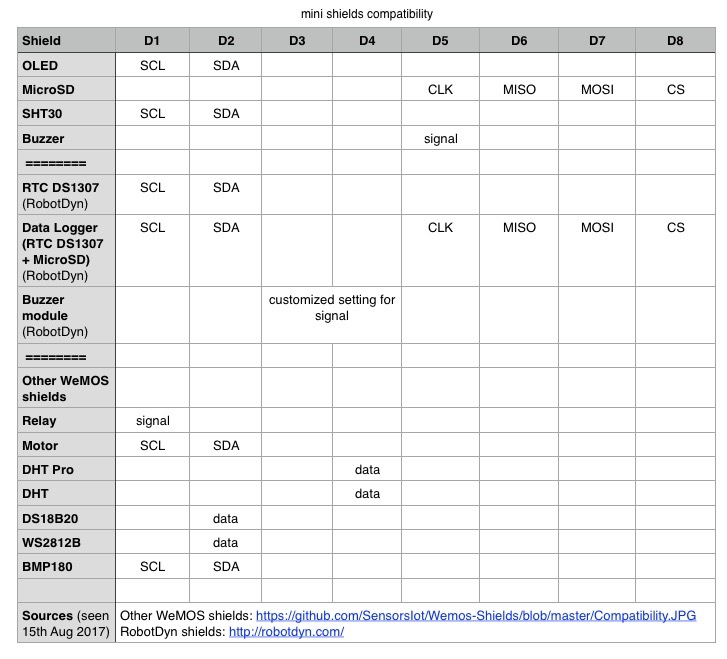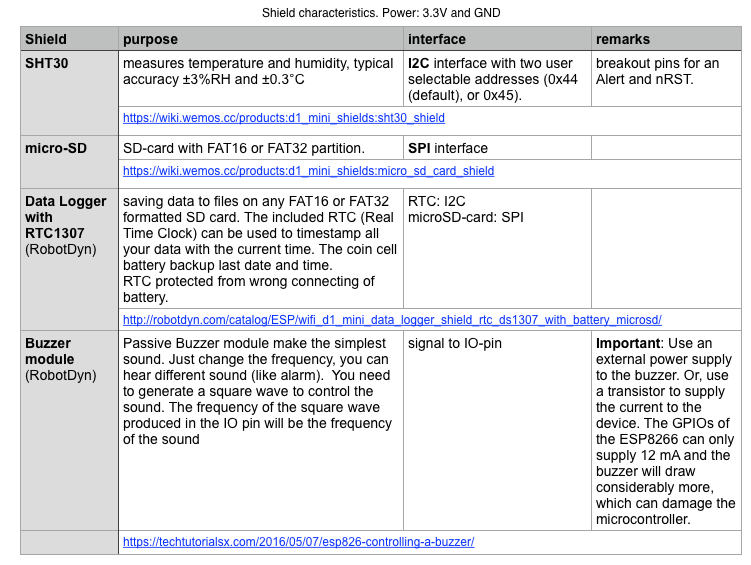As written in previous episode, the weatherstation contains WeMOS D1 mini and several mini-shields. Each shield communicates with the ESP8266 via GPIO-pins.
Tabel 1 summaries which WeMOS mini pins (D1.. D8) are used by WeMOS shields. I also added some RobotDyn-shields, which I intent to use.
 Table 1 shields comptability
Table 1 shields comptability
We see the Buzzer shield and micro-SD shelds have a conflict: both uses D5-pin for different purposes. That will not work, so the Buzzer shield is removed from the system. The data-pin of a buzzer breakout board (buzzer module), will be attached to either D3 or D4 lateron, and will not cause problems. Additionally, we also see that the shields Relay, DS18B20 (temperature sensor), WS2812B (a neopixel) cannot be used at the same time with shields using I2C.
Some other interesting characteristics of the shields are summarized in following table 2.
 Table 2 shields characteristics
Table 2 shields characteristics
The next step is how you use the OLED display to show numeric data, text and icons. Stay tuned…
Resources
| SHT30 shield…. | https://wiki.wemos.cc/products:d1_mini_shields:sht30_shield |
| micro-SD shield | https://wiki.wemos.cc/products:d1_mini_shields:micro_sd_card_shield |
| Data logger with RTC1307 shield……..…. | http://robotdyn.com/catalog/ESP/wifi_d1_mini_data_logger_shield_rtc_ds1307_with_battery_microsd/ |
| Techtutorials… | https://techtutorialsx.com/2016/05/07/esp826-controlling-a-buzzer/ |
| Sensorslot…… | https://github.com/SensorsIot/Wemos-Shields/blob/master/Compatibility.JPG |
| RobotDyn…… | http://robotdyn.com/ |
